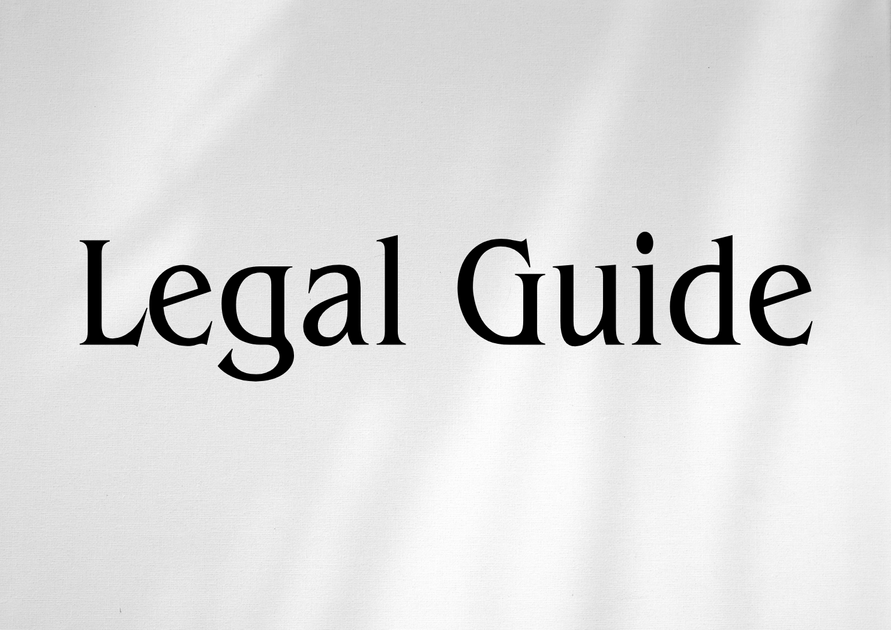Introduction: Artificial Intelligence Shaping the Future of Aviation and Transportation Law
The emergence of artificial intelligence (AI) in aviation and transportation is revolutionizing global mobility, enhancing efficiency, and triggering important legal considerations across jurisdictions. While the United States is spearheading regulatory frameworks for AI integration, these developments hold particular significance for the United Arab Emirates (UAE) as it positions itself as a hub for smart mobility and innovation. Understanding US regulatory approaches and anticipating how similar principles may be adopted or adapted in the UAE enables businesses, legal professionals, and executive decision-makers to proactively address legal compliance, operational risk, and strategic growth in a highly dynamic sector.
Recent legislative and regulatory updates in the US—ranging from Federal Aviation Administration (FAA) guidance to Department of Transportation (DOT) policy papers—are expected to shape international discourse on AI, safety, liability, cybersecurity, and operational integrity. For UAE aviation and transportation stakeholders tasked with aligning to best international practices, these shifts underscore the need for continuous legal vigilance and agile compliance mechanisms, especially as the UAE itself updates its legal frameworks (for example, Federal Decree-Law No. 46 of 2021 on Electronic Transactions and Trust Services).
This article delivers an expert analysis of current US legal positions on AI in aviation and transportation, outlines the practical implications for UAE-based businesses, compares regulatory approaches, and provides actionable strategies for legal compliance and risk mitigation. Readers will also find comparative tables, hypothetical case examples, and a forward-looking perspective to equip their organisations for the future of AI-driven mobility in line with 2025 UAE law updates.
Table of Contents
- US AI and Aviation Regulatory Landscape: Overview and Key Instruments
- Regulatory Pillars: Safety, Data, Liability and Cybersecurity
- Practical UAE Legal Insights and Comparative Analysis
- Case Studies and Hypotheticals for UAE Businesses
- Risks of Non-Compliance and Strategic Compliance Measures
- Future Trends and Professional Recommendations for UAE Stakeholders
- Conclusion: Safeguarding Smart Mobility with Legal Excellence
US AI and Aviation Regulatory Landscape: Overview and Key Instruments
Emerging US Laws and Policy Guidance
The United States, as a pioneer in AI-driven aviation and transportation, has introduced a tapestry of federal laws, regulatory guidance, and agency actions. Key frameworks include:
- Federal Aviation Administration (FAA) Modernization and Reform Act
- US Department of Transportation’s (DOT) Strategic Plan for AI Integration (2023–2026)
- FAA’s AI Roadmap and Associated Safety Guidance
- National Institute of Standards and Technology (NIST) AI Risk Management Framework
- Civil Aviation Authority (CAA) Consultation Papers
These frameworks focus on the certification of AI systems in aircraft, operational oversight for autonomous vehicles, and establishing minimum AI performance standards. Crucially, while the US federal approach is not yet unified under a single AI code, sector-specific regulations provide the baseline for safety, liability, data privacy, and cybersecurity management. Many state-level initiatives (notably California’s autonomous vehicle regulations) also complement federal direction.
Key Legal Definitions and Applicability
US regulators define “AI in aviation and transportation” broadly, encompassing machine learning, predictive analytics, and autonomous operational technologies used in aircraft and vehicles. The legal scope covers both embedded AI (e.g., pilot assistance systems, predictive maintenance) and standalone systems (e.g., drones, self-driving vehicles), affecting a wide range of operators, original equipment manufacturers (OEMs), service providers, and maintenance firms.
Official Regulatory Sources and References
- FAA Reauthorization Act (Public Law No. 115–254)
- FAA Advisory Circulars (AC 20–115D, AC 20–174, etc.)
- DOT AI Principles (2023)
- Executive Order on the Safe, Secure, and Trustworthy Development and Use of Artificial Intelligence (EO 14110, 2023)
- NIST Special Publication 1270 (AI Risk Management Framework)
Visual Suggestion:

A process flow diagram illustrating the pathway from AI system design to regulatory approval in the US.
Regulatory Pillars: Safety, Data, Liability and Cybersecurity
1. Safety Standards and Certification
The FAA remains the authoritative body for safety in civil aviation, with comprehensive guidance for certification of AI features in both manned and unmanned aircraft. Key FAA requirements include:
- Verification and validation of AI algorithms for safety-critical applications
- Performance demonstration under real-world and stress scenarios
- Documentation and traceability requirements for AI decision pathways
The US DOT’s Strategic AI Plan also requires transportation systems (including AI-powered rail and road vehicles) to comply with established federal vehicle safety standards, requiring rigorous test data, human oversight, and incident reporting.
2. Data Governance and Privacy
AI-dependent systems generate, process, and transmit large volumes of data. US laws emphasize:
- Compliance with sectoral privacy regulations (e.g., Driver Privacy Act, California Consumer Privacy Act)
- Principles of data minimization, informed user consent, and cross-border data security for operational AI
- Adherence to DOT’s guidance on algorithmic transparency and “explainable AI”
3. Liability, Insurance, and Risk Allocation
Legal liability for AI-driven incidents (from mid-air collisions to automated vehicle malfunctions) is a focal issue. US law addresses:
- Allocation of liability between OEMs, software providers, operators, and end-users
- Mediation and dispute resolution mechanisms in event of system failure
- Insurance requirements for unmanned aircraft and commercial vehicles utilizing AI
4. Cybersecurity and National Security
Recent regulatory updates in the US require:
- Mandatory cybersecurity certifications for AI-powered aviation and transport systems
- Continuous monitoring against hacking, spoofing, and data breaches
- Collaboration with the Cybersecurity and Infrastructure Security Agency (CISA) for threat response
Table 1: US Law 2023–2025 Updates vs. Earlier Frameworks (Comparison)
| Aspect | Pre-2021 US Law | 2023–2025 US Updates |
|---|---|---|
| AI Safety Certification | No clear standards, ad hoc certification | FAA mandatory performance requirements; NIST guidelines |
| Data Privacy | General privacy regulations, not AI-specific | Sectoral AI data privacy; algorithmic transparency |
| Liability Allocation | Tort-based, case specific | Explicit multi-party allocation rules; mandatory insurance |
| Cybersecurity | General IT security standards | Mandatory aviation/transport cybersecurity standards |
Practical UAE Legal Insights and Comparative Analysis
How US Regulatory Trends Inform the UAE Legal Environment
The UAE has demonstrated a proactive approach to digital transformation in aviation and transportation, supported by legal frameworks including:
- Federal Decree-Law No. 46 of 2021 on Electronic Transactions and Trust Services
- UAE Cabinet Resolution No. 23 of 2022 (Regulation of Autonomous Vehicles)
- General rules from the General Civil Aviation Authority (GCAA)
While US regulation provides sector-specific, detailed guidance, the UAE legal system is rapidly moving toward harmonizing with best practices and international standards. The UAE Ministry of Justice and Emirates Authority for Standardization and Metrology (ESMA) frequently reference US and European models when updating compliance standards for AI in transport and aviation.
Key UAE Law 2025 Updates: Implications for Aviation and Transportation Businesses
As of 2025, anticipated updates to UAE law (referenced via the UAE Federal Legal Gazette and Government Portal) include:
- Enhanced AI certification processes for smart mobility solutions
- Mandatory data protection and privacy provisions aligned with global AI standards
- Expanded liability and insurance mandates for operators of autonomous vehicles and AI-powered aircraft
- Stricter cybersecurity protocols in collaboration with UAE NCSC (National Cybersecurity Council)
Comparison Table: US vs. UAE AI Legal Provisions (2025)
| Regulatory Feature | US (2025) | UAE (2025 Updates) |
|---|---|---|
| AI System Certification | FAA surveillance, NIST framework | GCAA mandatory certification; ESMA technical standards |
| Data Privacy | CCPA, sectoral privacy acts | Federal Data Protection Law No. 45 of 2021 – expanded for AI |
| Liability | Multi-party allocation, mandatory insurance | Operator-centric responsibility, expanding to OEMs/software |
| Cybersecurity | CISA-driven sectoral mandates | National Cybersecurity Council (NCSC) protocols; cross-sectoral harmonization |
Case Studies and Hypotheticals for UAE Businesses
Case Study 1: AI-Driven Drone Company Seeking GCAA Approval
Scenario: An Emirati drone manufacturing startup develops an autonomous delivery system using AI for route optimization and obstacle detection. In applying for GCAA certification, the company must:
- Submit technical documentation tracing AI decision flow (reflecting FAA/NIST best practices)
- Demonstrate successful stress simulations and safety data transparency
- Comply with Federal Data Protection Law No. 45 of 2021 in processing navigation data
- Implement cybersecurity countermeasures in line with UAE NCSC guidance
Insight: US regulations require robust documentation and cross-functional compliance, a trend being mirrored by the UAE’s legal regime. Early legal engagement ensures market access and operational risk minimization.
Case Study 2: AI-Enabled Fleet Management – Cross-Border Compliance
Scenario: A UAE-based logistics firm deploys AI fleet management tools, sourcing vehicles and software from US vendors. Legal issues include:
- Adhering to local GCAA and UAE Cabinet Resolution No. 23 of 2022 requirements for autonomous vehicle operation
- Negotiating cross-jurisdictional liability allocation, with reference to US multi-party frameworks
- Ensuring GDPR-like privacy for international shipments involving EU and US data subjects
Insight: UAE organizations should leverage US experience in contractual liability and compliance mapping for global operations, integrating UAE-specific due diligence requirements.
Visual Suggestion:

A compliance checklist graphic for aviation and transportation companies deploying AI in the UAE, with steps aligned to US and UAE standards.
Risks of Non-Compliance and Strategic Compliance Measures
Legal and Commercial Consequences
The cost of non-compliance with AI-related aviation and transport laws is escalating, both in the US and the UAE. Critical risks include:
- Regulatory penalties (administrative fines, license revocation)
- Civil liability for damages from AI-related operational failures
- Commercial exclusion from regulated tenders or export markets
- Reputational harm, operational disruption, and loss of business opportunity
Visualization Suggestion:

A comparison chart outlining the scale of penalties for AI law non-compliance in both the US and UAE.
Table: Penalty Comparison (US and UAE 2025)
| Jurisdiction | Non-Compliance Example | Possible Penalties |
|---|---|---|
| US (FAA/DOT) | Unapproved AI in operational drone | Up to USD 27,500 per incident; operational ban; recall mandates |
| UAE (GCAA/Federal Data Law) | Failure to certify AI fleet management system | AED 500,000 – 1,000,000; facility closure; loss of license |
Compliance Strategy Recommendations
- Proactive Regulatory Audits: Regular assessments aligned with US and UAE authority guidance
- Legal Due Diligence: Dovetail contractual obligations with evolving multi-jurisdictional standards
- Board-Level Awareness: Board and executive management training regarding AI risk and legal requirement evolution
- Integrated Insurance Solutions: AI-specific coverage and liability mapping for both aviation and transport operations
Future Trends and Professional Recommendations for UAE Stakeholders
Market Anticipation and Regulatory Evolution
International bodies—such as ICAO and the International Transport Forum—forecast exponential growth in AI-powered mobility. As the US advances towards more granular regulatory control, the UAE is fast-tracking national strategies for smart transport, reflected in Vision 2031 and related decrees.
Professional Recommendations for Legal Compliance in the UAE
- Maintain ongoing monitoring of Federal Decree-Law No. 46 of 2021 and subsequent Cabinet Resolutions for sectoral compliance
- Engage in structured dialogue with GCAA, ESMA, and the UAE Ministry of Justice to clarify certification and operational requirements
- Benchmark compliance against both US FAA/DOT guidelines and UAE national standards for global operational leverage
- Foster a company culture prioritizing legal and ethical AI implementation, including documented training and incident protocols
Visual Suggestion:

A roadmap diagram mapping out UAE regulatory updates for AI in aviation and transportation through 2025 and beyond.
Conclusion: Safeguarding Smart Mobility with Legal Excellence
The intersection of AI, aviation, and transportation is fundamentally altering the landscape of mobility worldwide. The US regulatory model offers valuable insight and a potential blueprint as the UAE moves to modernize its own legal environment in response to the demands of smart mobility and AI-powered systems. Adherence to both local and international best practices is critical for maintaining market competitiveness, legal certainty, and operational resilience.
As 2025 brings further legal updates in the UAE, clients are urged to institutionalize robust compliance programs, invest in legal capacity building, and adopt a forward-thinking approach to risk management. Proactive engagement with legal counsel familiar with both UAE and international standards will be indispensable for organizations seeking to thrive in the next era of global transportation innovation.




